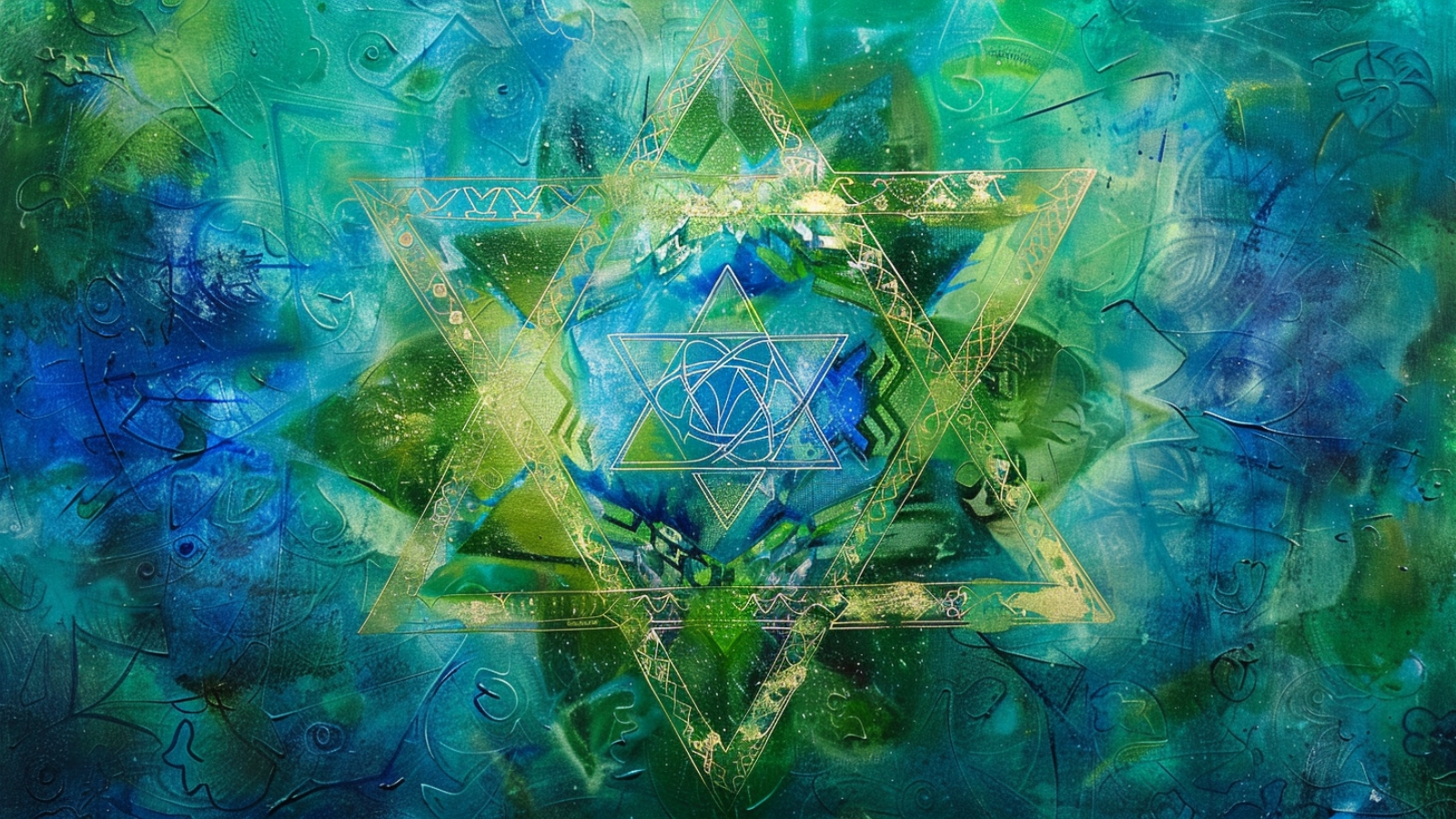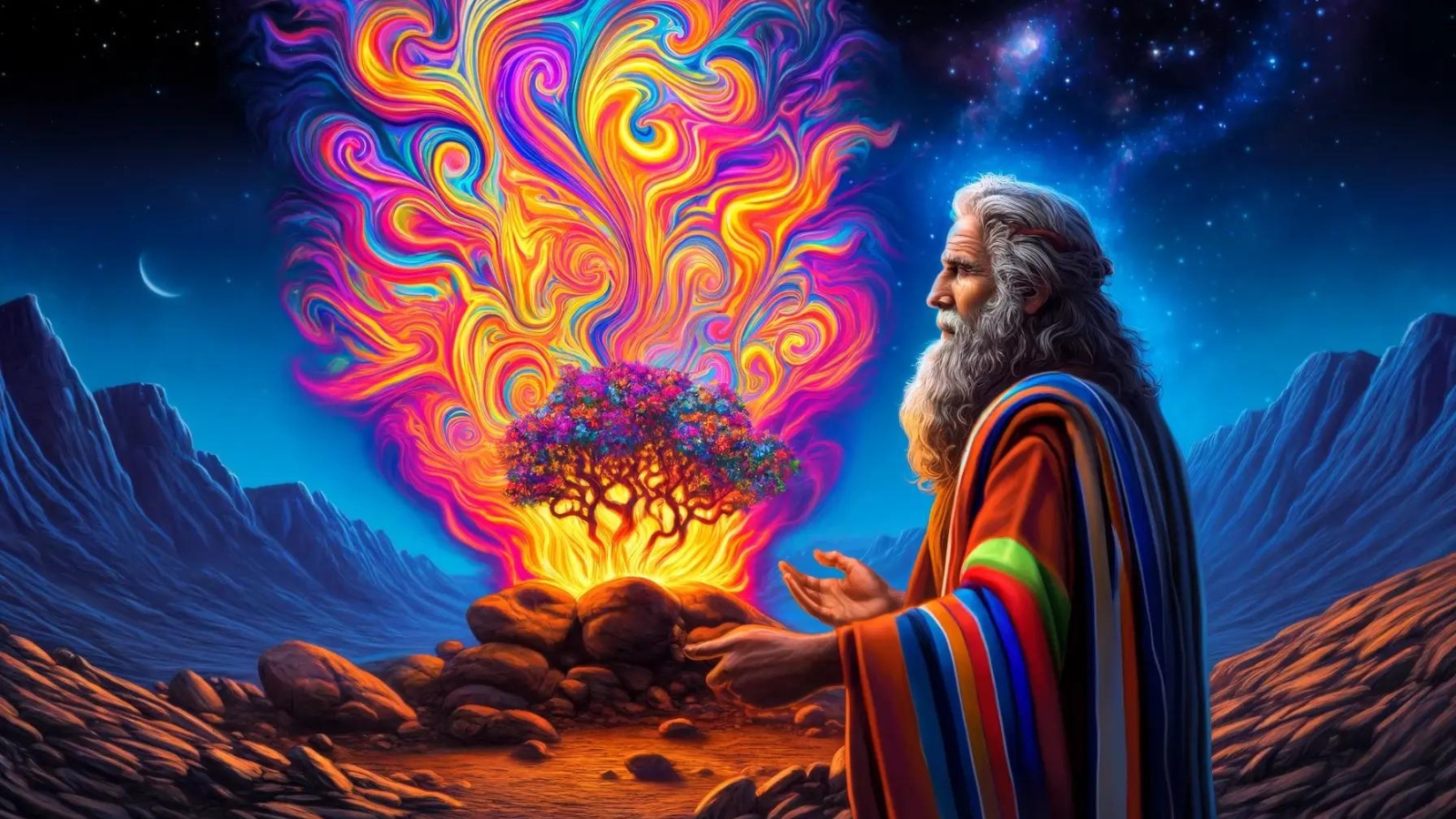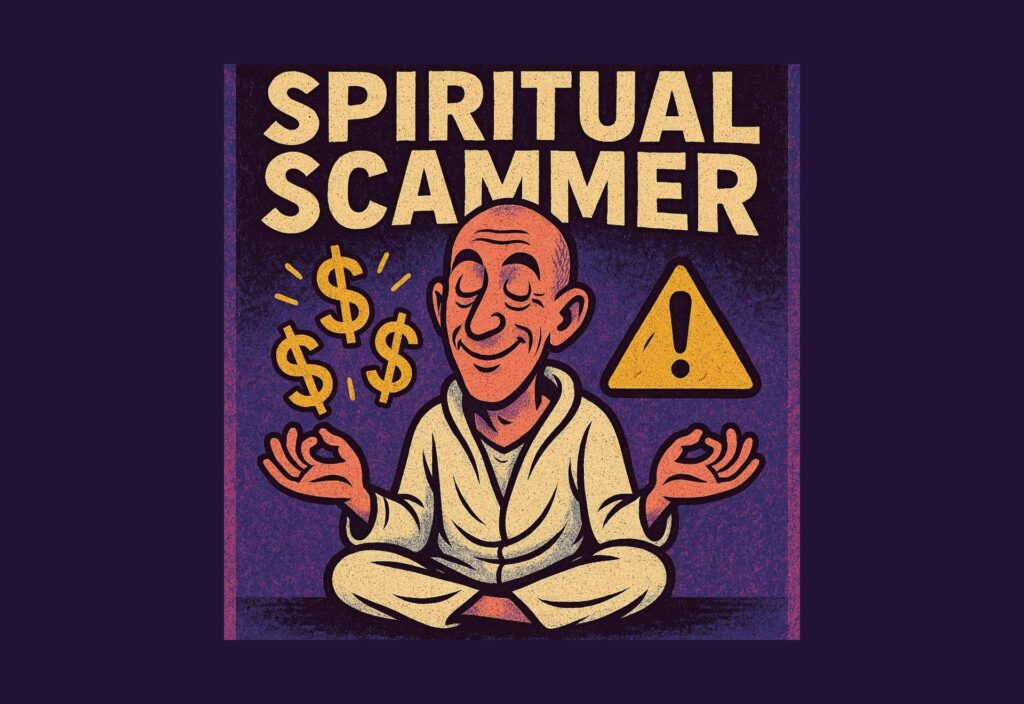As the first star appears in the night sky, marking the onset of Passover, we gather to recount and re-experience a pivotal saga of freedom that is as old as the Jewish people themselves. Passover, or Pesach, commemorates the Exodus when Hebrew slaves were led out of Egypt into the promised land. This festival is a profound emblem of deliverance and hope, resonating deeply through centuries of Jewish perseverance and survival.
In the wake of October 7, the Jewish community faces renewed trials, making the story of Passover all the more poignant. The echoes of ancient liberation reverberate strongly, reminding us of our enduring spirit and the continual fight for freedom in the face of adversity. This year, the story is not just historical; it is immediate and critical, a call to unity and strength in uncertain times.
Turning our gaze to the mystical, the use of psychedelics in religious contexts offers a bridge between the physical and the metaphysical, shedding light on profound truths through altered states of consciousness. Historically, many cultures have embraced entheogens to deepen spiritual connections and understanding.
This brings us to the intriguing possibility: Could Moses’ profound encounter with the divine at the burning bush be akin to a psychedelic experience? This article will explore the intersection of ancient narrative and modern psychedelic insight, pondering whether substances found naturally in the Sinai Peninsula could have catalyzed Moses’ vision, thus connecting our forebear’s spiritual journey with our contemporary quests for meaning and enlightenment.

Understanding Passover
Passover, or Pesach in Hebrew, stands as a cornerstone of the Jewish faith, celebrating the Israelites’ deliverance from Egyptian slavery as detailed in the Book of Exodus. This pivotal festival spans eight days (seven in Israel), during which leavened bread is eschewed in favor of matzah, symbolizing the haste of the Israelites’ departure from Egypt, which allowed no time for their dough to rise.
The celebration is anchored by the Seder, a ritualistic meal that features a specific order of readings, songs, and symbolic foods, each with profound meaning. The Seder plate holds items such as bitter herbs (maror), symbolizing the bitterness of slavery; charoset, a sweet paste representing the mortar used by the Israelite slaves; and a lamb shank bone, recalling the sacrificial lamb. Each component of the Seder is designed to provoke discussion and reflection, particularly among the younger participants, ensuring the story and its lessons are passed down through generations.
Central to the story of Passover is the theme of freedom and liberation. It commemorates not only the Israelites‘ physical release from bondage but also the broader spiritual implications of liberation from oppression. This narrative resonates deeply within the Jewish psyche, reinforcing values such as justice, perseverance, and the relentless pursuit of freedom.
It serves as a yearly reminder of the hardships endured for liberation and the continuous responsibility to stand against oppression in all forms, affirming the timeless relevance of freedom as a fundamental human right.

Psychedelics and Spiritual Experience
Psychedelics such as psilocybin and LSD are known for their profound ability to alter human consciousness, often inducing vivid visual and emotional experiences and altering perceptions of time and self. These substances have been explored not only for their therapeutic potential but also for their capacity to facilitate deep, meaningful spiritual experiences.
Historically, many cultures have used natural entheogens, like peyote, ayahuasca, and psilocybin mushrooms, as sacraments in religious and spiritual ceremonies to foster deep connections with the divine, enhance introspection, and strengthen community bonds.
In modern spiritual practices, the use of these substances continues to gain prominence. Contemporary movements integrate these ancient practices with new-age spiritualism, viewing psychedelics as tools for personal growth, healing, and understanding. This renewed interest is supported by a growing body of research that links psychedelic use with significant reductions in depression, anxiety, and PTSD, suggesting a powerful, transformative role in both psychological and spiritual realms. This exploration into the sacred dimensions of psychedelics invites a deeper understanding of their potential to heal and enlighten.

The Moses Enigma
The story of Moses, a seminal figure in Jewish, Christian, and Islamic traditions, is filled with miraculous events, none more striking than his encounter with the divine at the burning bush. According to the biblical narrative, while tending his father-in-law Jethro’s flock in the desert near Mount Horeb, Moses stumbled upon a bush that burned with fire yet was not consumed.
Talking With God
From this flame, God spoke to Moses, tasking him with leading the Israelites out of Egypt and into freedom. This moment is pivotal, marking Moses’ transformation from a shepherd into a prophet and leader of his people.
This extraordinary episode has prompted some to speculate on its nature, particularly focusing on the possibility that Moses’ experience was influenced by psychoactive substances. The Sinai Peninsula, where the encounter occurred, is known to host various plant species, including the Acacia tree, which contains DMT (Dimethyltryptamine), a potent psychedelic compound. Some theories propose that the burning of such bushes could have released psychoactive substances that Moses might have inhaled, potentially inducing visions that he interpreted as divine communication.
Scholars and researchers exploring the intersection of psychedelics and religious experiences have provided insights into how substances like those found in the Acacia could impact human consciousness.
Benny Shanon, a professor of cognitive psychology, famously suggested in his “Biblical Entheogens” hypothesis that the effects of such plants could explain not only the burning bush narrative but other biblical visions. His theory, while controversial, opens up discussions on the role of entheogens in ancient religious contexts, suggesting that these substances might have been the catalysts in pivotal biblical revelations.
These discussions do not diminish the spiritual significance of Moses’ encounters but offer a lens through which to view them that bridges divine mystical experiences with naturalistic explanations. This perspective invites a broader understanding of how sacred texts might integrate both supernatural inspirations and earthly elements, enhancing our appreciation of these ancient narratives in a modern context.
The Acacia Connection: Entheogenic Potential in the Biblical Landscape
The Acacia tree, native to the Sinai Peninsula and the Middle Eastern region, is significant in biblical narratives and might play a key role in understanding some of the mystical experiences described in the scriptures. This plant is not only known for its hardy nature and usefulness in building and crafting but also for its psychoactive properties. The Acacia species contains DMT, a potent entheogenic compound that can induce profound psychedelic states when consumed.
Historically, the Acacia was considered a sacred wood, used in the construction of the Tabernacle and the Ark of the Covenant. The possibility that this plant could have been used in religious rites or even inadvertently during the burning of bush material (leading to inhalation of psychoactive smoke) offers a fascinating layer of context to Moses’ vivid encounters with the divine. This perspective aligns with broader anthropological findings that many ancient civilizations integrated natural psychedelics into their spiritual practices for deeper religious experiences.

Passover in Contemporary Times
In contemporary times, the themes of liberation and freedom at the heart of Passover have taken on renewed significance, especially in light of the unsettling events following October 7th, 2023. These events have cast a shadow, reminding the global Jewish community of the persistent challenges they face regarding security, acceptance, and peace. Passover serves as a potent reminder of the enduring Jewish spirit and the continuous struggle for liberation—not just historically but in the current sociopolitical climate as well.

Enduring Themes
The Passover story, with its deep themes of escape from tyranny and the journey toward a promised land, resonates profoundly today. It inspires individuals and communities to reflect on their own experiences of confinement and their aspirations for freedom. This reflection is particularly poignant in a world where oppression and freedom are still at the forefront of collective consciousness. The Seder’s recounting of the Exodus story encourages participants to consider not only their ancestors’ journey but also their personal and contemporary quests for freedom and dignity.
For many, this quest for deeper understanding and personal peace has led to an exploration of psychedelic experiences as a tool for spiritual and emotional liberation. In a manner paralleling the ancient Israelites’ physical journey from Egypt, psychedelics can facilitate a profound journey within, leading to new insights and emotional release.
Participants in modern psychedelic therapy often report experiences of profound connection to a greater whole, a breaking of the chains of personal ego, and past traumas—themes that echo the Passover narrative of liberation from bondage.
Jews seeking to connect more deeply with the Passover story might find that responsible, guided use of psychedelics provides a contemporary medium to explore themes of freedom and deliverance. This exploration can lead to a renewed sense of purpose and understanding, resonating with the ancient lessons of Passover.
By viewing these substances as modern-day aids in their spiritual and psychological Exodus, they can achieve a form of liberation that is both deeply personal and expansively spiritual.

Ethical and Theological Implications of Psychedelics
The integration of psychedelics into religious experiences raises significant ethical and theological questions that challenge traditional interpretations and demand careful consideration. From an ethical standpoint, the key concern lies in the authenticity and intentionality of these experiences.
If psychedelic substances are used to induce what might be perceived as spiritual encounters, it prompts a debate on the validity of these experiences compared to those occurring without such aids. This raises fundamental questions about the nature of spiritual authenticity and whether chemically induced experiences can hold the same value and veracity as unmediated ones.
Theologically, the potential for substances to enhance or mediate divine encounters is both intriguing and controversial. Many religious traditions hold that mystical experiences and divine communications are profound, often life-altering experiences granted by a higher power.
Introducing psychedelics into this equation introduces a layer of complexity: Are substance-induced visions valid pathways to divine insight, or do they merely simulate experiences that should occur spontaneously or supernaturally?
This discussion touches upon the interpretation of sacred texts; for instance, if natural entheogens aided Moses’ encounter with the burning bush, does that diminish the divinity of the revelation, or does it suggest a different method by which the divine operates within the natural world?
Moreover, distinguishing between historical fact and mystical experience is a delicate task. Religious texts often blend historical events with mystical insights, creating narratives that are spiritually meaningful but challenging to dissect with historical and scientific precision.
The presence of entheogens in ancient rituals, as hypothesized in various scholarly works, suggests that what may be documented as mystical might also have roots in the tangible and empirical world. The challenge lies in respecting these narratives’ sacredness while exploring their earthly components, acknowledging that the boundary between historical fact and mystical experience is often blurred and multifaceted.

Final Words
The intriguing possibility that Moses’ profound encounters, including the vision of the burning bush, might have been influenced by psychedelic substances found in the Sinai Peninsula invites a fascinating perspective on the intertwining of spiritual experiences and natural elements.
Passover, a time of deep reflection, renewal, and liberation, echoes these themes by encouraging us to contemplate our journeys toward freedom. As we recount and relive the Exodus, let us also explore our spiritual landscapes within the frameworks of our cultural and religious practices. Engage with these ancient narratives to discover personal meanings and insights, fostering a richer, more connected spiritual life.















